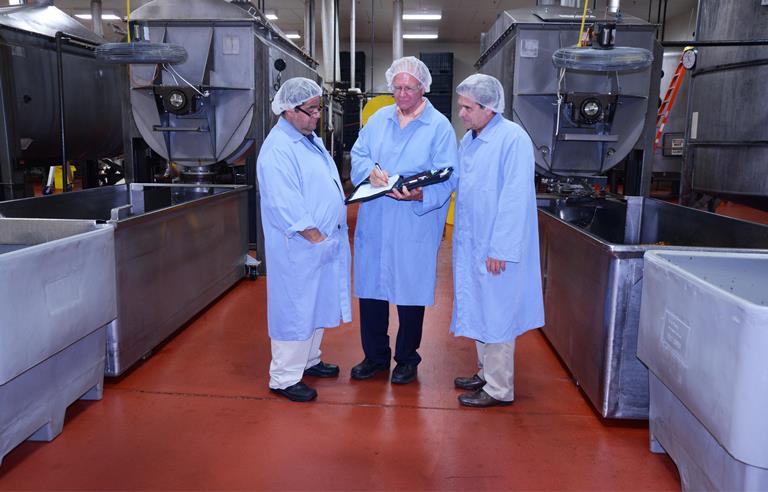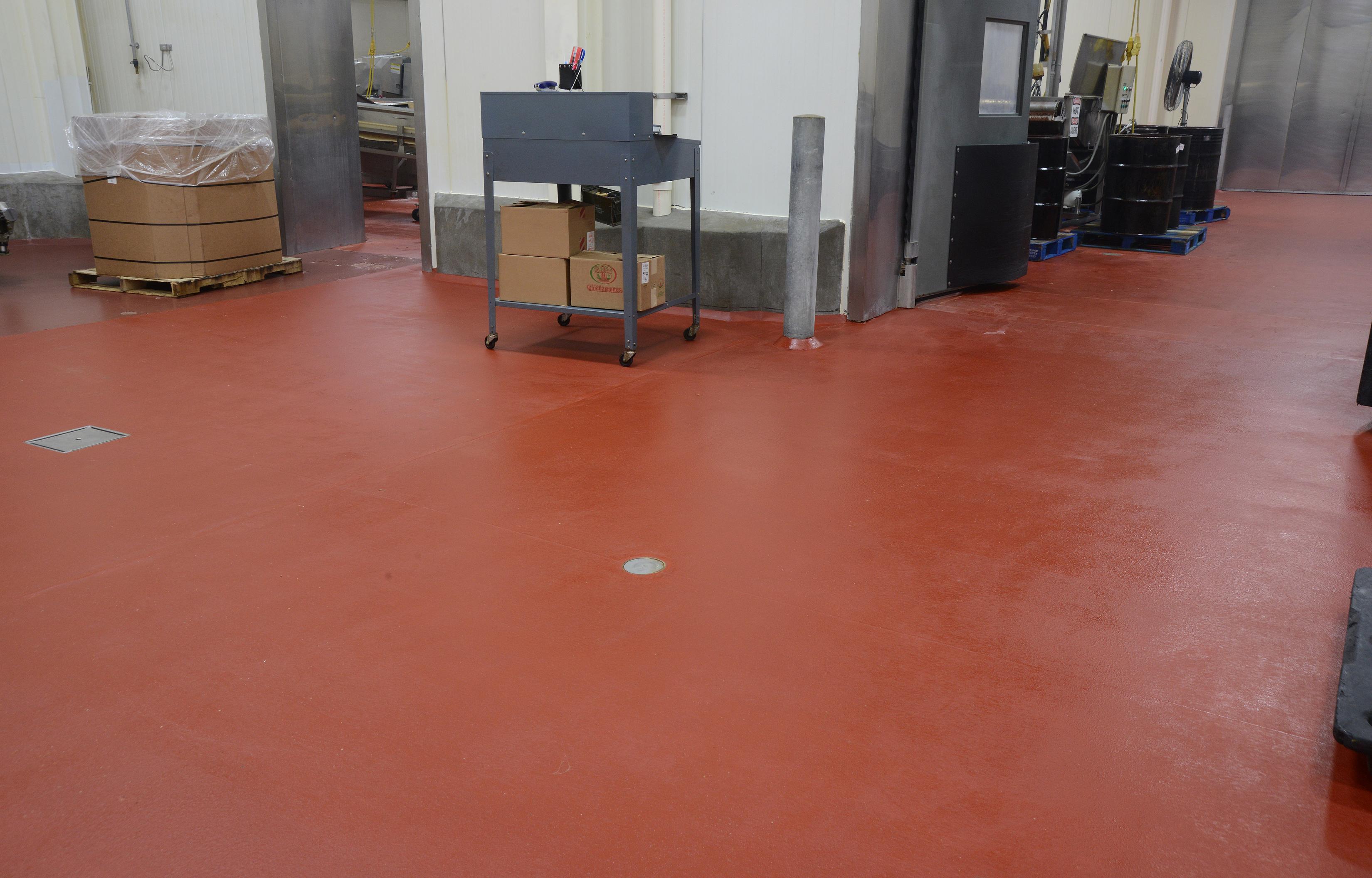With any coatings job, there’s a recipe for success. The ingredients depend on the project, but the general equation is the same. Substrate + Intended Use + Proper Coatings and Application = System Success. Unfortunately, when one of those figures is entered incorrectly, something inevitably goes wrong. And so it was with the floor of a snack food maker in the Midwest.
In 2008, the client broke up their facility into two different areas: one area for production (e.g., cutting, frying, and cooking of the animal products) and cooler/dock, and the second area was designated for packaging (e.g., sorting, holding cooler, and packaging rooms). It made sense, then, that when the floors were coated they would specify different flooring systems for the different flooring functions: cementitious polyurethane for the production areas that would see animal oils and hot water for cleanup, and epoxy flooring for the packaging areas that would not.
However, what happened when the packaging areas took on a different role was anything but successful. In fact, as it turns out, food oils and epoxy floors do not mix!
Re-Heat, Re-Coat
“This is a case of the actual use not meeting the expected use,” explained Ron Puszynski, president of Concare, Inc. Concare, which was the applicator in charge of the 2008 floor system installation, was called upon again in 2013 when the client decided on a re-coat to meet the Food Safety Modernization Act (FSMA).
“The recommendation for each of these systems was based on the original representations of their respective uses,” Puszynski continued. “In the sorting, holding cooler, and packaging rooms, the selection of the epoxy polymer topping in lieu of the cementitious polyurethane is at the heart of the failure; the production conditions in these rooms turned out to be nearly the same as the core production rooms. Animal fat/oil from rendering pork products proved to be ubiquitous in all areas, and this accelerated the breakdown of the epoxy polymer, but not the cementious polyurethane.”
And so with Puszynski’s expert opinion (he’s been in the industry for 36 years) along with moisture readings, Concare and the client believed that replacing the old epoxy floor with the successful cementitious polyurethane was a good plan. “The original areas of cementitious urethane, after five or six years, were still performing well so the same product was used,” he explained. “We’d expect the same kind of results there [in the 2013 rehab areas] as well.”
Main Ingredient
The coatings company is dedicated to working within a 200-mile (1,931 km) radius of their offices in Melrose Park, Ill. “That’s simply because…if you’re too far away and need to provide additional support, materials, man power, it’s hard to do that,” Puszynski explained. He finds that “distance can be an enemy” in providing what’s best for the customer. And when you only have three days to install the best coating system, time is definitely not on your side.
“It’s not unusual for plants in operation to have very tight time frames,” said Puszynski. “So for us it’s really second nature to complete work over short durations. It’s quite common simply because of demands of production.” With only three days to work, that meant this six-person crew needed to get right into the 3,200-square-foot (297 m²) mid-July 2013 rehab.

Working near the office also meant having easier access to the expertise of the logistical support. The office staff helps to set up the projects (aka pre-plan logistics), which includes verifying the start times and power requirements, researching access to the site, and “all the other details that you can imagine on a short-duration project are important to have resolved long before you begin,” Puszynski explained.
Another item that was addressed before the crew got to the jobsite was safety. “Before the project gets started, there’s a list of possible activities or likely activities and the safety requirements that are attached when being done or completed,” said Puszynski of their Job Hazard Analysis (JHA). For this project, the crew wore safety glasses, steel-toed boots, work gloves, knee pads, hearing protection, and safety helmets. “The safety protocol is quite important to ensure you’re delivering a safe work environment,” he continued. “Not just for our people but also for the customers and people in the facility.”
So once the crew hit the site on Friday, they were all set to get right into their work. They started by removing all of the epoxy coating and approximately 3/16ths of an inch to 1/4 of an inch (0.5–0.6 cm) of the contaminated concrete using an Airtec scarifier and milling machine. Then, as Puszynski explained, “we also degreased the surface prior to starting.” Once the floor was prepped, the crew, led by a supervisor, was able to move onto installing the coatings system.
Wielding a rake and hand trowels, the crew laid down a 5/16ths-inch (8 mm) layer of Flowcrete Flowfresh RT, which is a “heavy duty, chemical resistant, antimicrobial polyurethane resin floor screed providing a durable textured colored floor finish,” said Puszynski. Perfect for the oily floors! Into that, they broadcast an aluminum oxide aggregate to help safe guard against the dangers of the oil. “Floor safety is really important and the aluminum oxide provides an aggressive surface enhancing traction for foot traffic and carts running on the surface,” he continued. The crew topped the basecoat/aggregate layer, which took 10 hours to cure, with another layer of Flowfresh RT.
“We added a finish coat to the surface to aid in clean-ability,” Puszynski said. “And, typically when you apply a broadcast area, especially an aluminum oxide, it’s very difficult to clean so you want to seal it up a little bit to make it easier for the maintenance and sanitation department to do their job.”
Combo Meal
When Monday morning came, the facility was ready and back in action.
“I’m happy to report that the cure, the remedy, has been successful, and we don’t see any evidence of deterioration, failure, disbonding, or staining/discoloration,” said Puszynski. For this client and applicator, finding the successful recipe proved to be invaluable.
